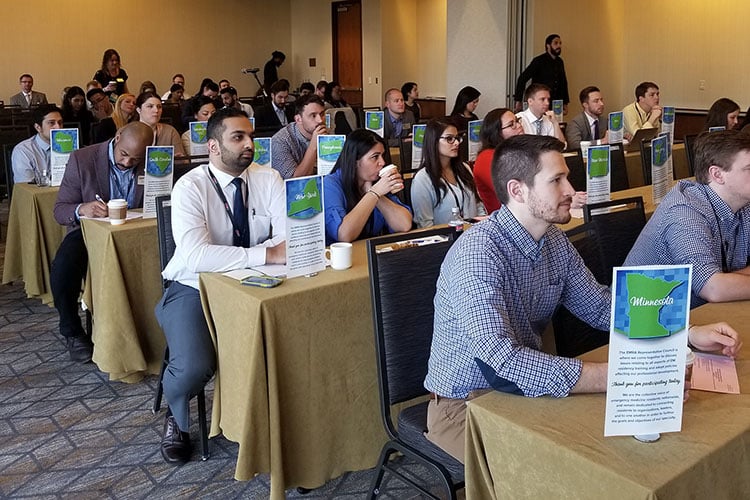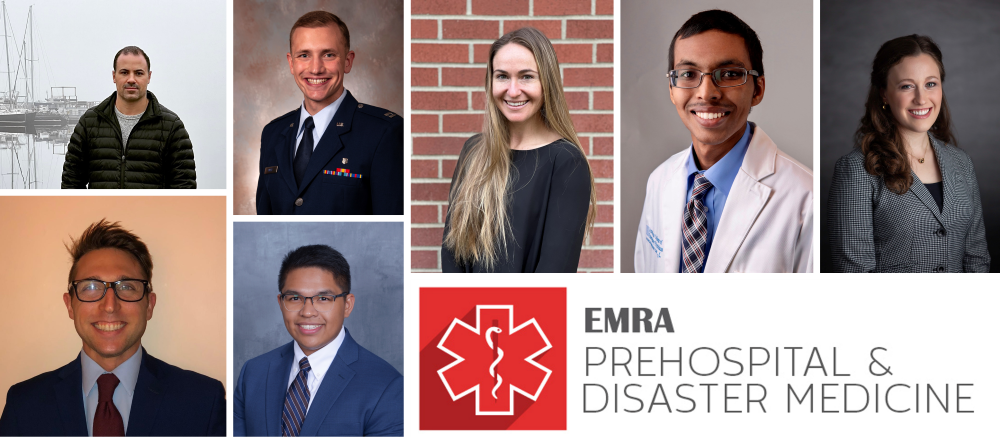LGBTQIA+ Education in Emergency Medicine
Breeanna Messner, MSIII, Washington State University Elson S. Floyd College of Medicine
EMRA MSC West Coordinator, 2022-23
Nicholas Rodriguez, MSIII, Kaiser Permanente School of Medicine
EMRA MSC Pacific regional Representative, 2022-23
Kit Sitterley, MSIV, Burrell College of Osteopathic Medicine at New Mexico State University
EMRA MSC Southwest Regional Representative, 2022-23
As medical students, like the majority in the field, we see a variety of patients. This is an invaluable time in our personal development and medical training. Yet, with it comes great responsibility. The oath we took at the beginning of this journey means different things to most. However, at its core, it signifies our duty to provide informed and empathetic care to all our patients, so when I met my first transgender patient in clinic it made me ask a very important question: As a medical student, what is my knowledge of LGBTQIA+ health?
As it turns out…very little. This experience made me think of the massive need for improved education of LGBTQIA+ health in medical school in the United States. And, to no surprise, it’s lacking significantly. In the United States in 2017, 4.5% of the population identified as a part of the LGBTQIA+ community1. Yet only two-thirds of medical schools provide any LGBT health training, while one-third provide none1. Of those two-thirds, medical students, on average, only have five hours of LGBTQIA+ health-sensitive content built into the preclinical years of their school’s curriculum. As a result, LGBTQIA+ individuals experience significant health care disparities and rampant discrimination in the United States2. To explore this further, we wanted to ask others if they felt similarly, so we reached out to see if they did.
Dr. Erica Concors (pronouns: they/she, @ConcorsErica), a PGY-3 at the University of Chicago Department of Emergency Medicine, reflected on a similar experience they had with LGBTQAI+ health education in medical school. Their experience is a driving factor behind current efforts to develop a comprehensive curriculum through EMRA to fill this gap many residents may have in their medical education training. With a team of fellow residents, faculty experts, and interested community members from the LGBTQAI+ community, she hopes to develop a curriculum that covers the full scope of topics, ranging from basic foundational topics (i.e., what does transgender mean, what are pronouns) to advanced cases and clinical presentations. The curriculum also aims to touch on broader systems, policies, and laws at play that impact queer-identifying patients.
I asked Dr. Concors what advice she would give to medical students who are disappointed at how LGBTQAI+ topics are covered in their school’s curriculum. Their advice: “build connections and find allies in positions of power who are interested in change.” Advocacy and creating lasting institutional change requires more than the efforts of one medical student. Spending one’s valuable time and efforts networking and identifying stakeholders is crucial to implementing changes that persist after one graduates.
And most importantly, this work is hard and takes a lot of effort — take care of yourself.
The lack of LGBTQIA+ education in emergency medicine has created significant barriers to health. Some reasons for Transgender or Gender Nonconforming (TGGNC) nonuse of US Emergency Departments include “fear of being outed, misgendered, or experiencing discrimination”, “past experience of staff refusal to use preferred pronouns”, and “providers are poorly educated in TGGNC health-related issues.3” Providing more LGBTQIA+ education is crucial to provide equal health access and removing barriers to healthcare. Allowing patients to be themselves can translate into gaining an entire medical history and resulting in better medical care.
Although there is still a lot of work to be done, really important and necessary improvements have been made already. In particular, there has been an increase in gender and sex inclusion in study design in Emergency medicine research4. More discussion and awareness of this gap in medical care can encourage and promote essential changes to the current standard in Emergency Medicine education.
References:
- Carl G. Streed Jr. By Jenny Siegel By John A. Davis, Jr., C. G. S., Siegel, J., & Davis, J. A. (2019, March 4). Keeping our promise to LGBTQ+ patients. AAMC. Retrieved August 7, 2022, from https://www.aamc.org/news-insights/insights/keeping-our-promise-lgbtq-patients?check_logged_in=1
- Juno Obedin-Maliver, M. D. (2011, September 7). Lesbian, gay, bisexual, and transgender–related content in undergraduate medical education. JAMA. Retrieved August 7, 2022, from https://jamanetwork.com/journals/jama/fullarticle/1104294
- Chisolm-Straker, M., Jardine, L., Bennouna, C., Morency-Brassard, N., Coy, L., Egemba, M. O., & Shearer, P. L. (2017). Transgender and Gender Nonconforming in Emergency Departments: A Qualitative Report of Patient Experiences. Transgender health, 2(1), 8–16. https://doi.org/10.1089/trgh.2016.0026
- Safdar, B., Ona Ayala, K. E., Ali, S. S., Seifer, B. J., Hong, M., Greenberg, M. R., Choo, E. K., & McGregor, A. J. (2019). Inclusion of Sex and Gender in Emergency Medicine Research-A 2018 Update. Academic emergency medicine : official journal of the Society for Academic Emergency Medicine, 26(3), 293–302. https://doi.org/10.1111/acem.13688






